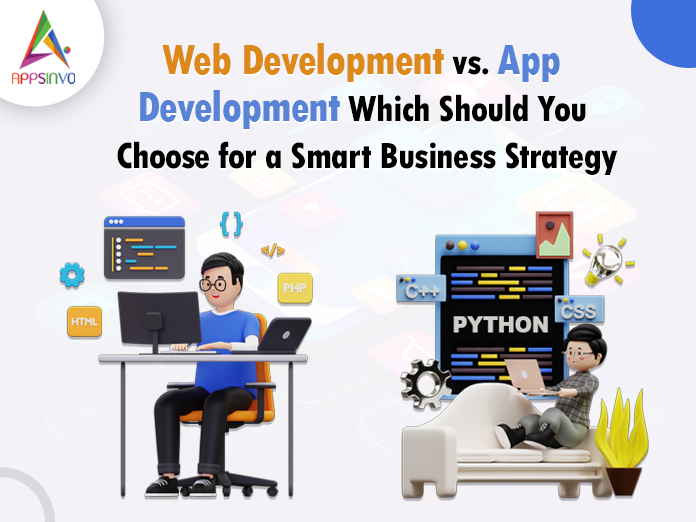In today’s digital landscape, organizations must make a critical decision: should they prioritize web or app development? Both options have pros and disadvantages, and the decision is ultimately based on your business objectives, target audience, and desired user experience. Here’s a thorough comparison to help you make a wise decision.
1. Target Audience
Web Development:
Websites are accessible to anyone with an internet connection and a browser, making them ideal for reaching a broad audience. If your goal is to attract a diverse user base, web development might be the way to go. Websites can also be optimized for search engines, increasing visibility and attracting organic traffic.
Application Development:
In contrast, mobile apps provide a more personalized experience. If your target audience primarily uses mobile devices, investing in app development can help increase user engagement. Apps enable push alerts and offline access, which can dramatically boost user retention and involvement.
2. User Experience.
Website Development:
Websites are generally easier to navigate on larger displays, making them ideal for content-heavy apps. Responsive design ensures that websites adjust to different screen sizes, offering a positive user experience across all devices. Websites, on the other hand, may not take full advantage of device-specific features such as GPS or camera access.
Application Development:
Mobile apps provide a better user experience by leveraging smartphone features such as GPS, cameras, and touch gestures. They can deliver speedier performance and smoother interactions, which is essential for applications that require real-time data or complicated features. Furthermore, apps can provide a more immersive experience, encouraging deeper user interaction.
3. Cost and Time Investment
Website Development:
Building a website is often less expensive and faster than developing an app. With a single codebase for all platforms, websites may frequently be updated without forcing consumers to download new versions. This can save you both time and money in the long term.
Application Development:
App development typically includes greater startup expenditures and a longer development period, particularly if you intend to build apps for both the iOS and Android platforms. However, if your software offers unique features that dramatically increase user engagement and pleasure, the investment may be worthwhile.
4. Maintenance and updates.
Website Development:
Maintaining a website is often easier because updates can be made directly on the server, without requiring users to do anything. This ensures that all users have access to the most recent features and fixes right away.
Application Development:
Apps require frequent improvements, that consumers must download. This can lead to fragmentation, as some users may not have the most recent version. However, consistent updates can keep people interested and informed about new features.
5. Monetisation Strategies.
Web development:
Websites can monetize in many different kinds of ways, including advertising, subscriptions, and e-commerce. This flexibility enables a variety of revenue streams, making it easier to respond to market changes.
Application development:
Apps can also be monetized through in-app purchases, subscriptions, and advertisements. The technique chosen is typically determined by the app’s purpose and user behavior. A well-executed software can result in strong user loyalty, which translates into consistent revenue.
Conclusion
The decision between web development and app development is based on your individual business objectives and user requirements. If your primary goal is to reach a large audience via a content-rich platform, a website may be the best option. In contrast, if you want to engage customers with customised interactions and take advantage of mobile-specific abilities, investing in app development could pay off handsomely.
Finally, many successful organizations use a hybrid approach, using both websites and apps to broaden their reach and improve the user experience. Evaluate your objectives, identify your target audience, and select the growth path that best suits your strategy.












